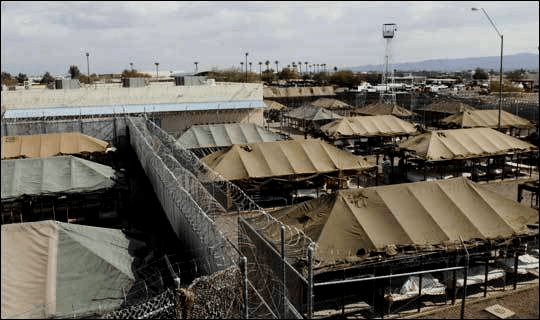Recent headlines are full of dire warnings about heat-related deaths. Just the other day a headline in the Washington Post stated that a third of the world’s people already face deadly heat waves. And it could be nearly three-quarters by 2100.
Recently I came across disturbing footage from a St. Louis jail showing inmates without air conditioning calling for help from inside the stiflingly hot facility. This is not the first time these type of headlines have showed up in the news this summer.
In June of this year, deadly heat waves in the Southwestern United States also led to prisoners facing inhumane conditions due to extreme heat. In Arizona, while the weather channel warned that locals should stay indoors and temperatures climbed upwards of 120 degrees Fahrenheit, 380 prisoners were left living in tents in unbearable heat.
The impacts of climate change add to the layers of injustice prisoners already face. The U.S. holds the largest number of prisoners per capita in the world. Since the 1970’s the U.S. has seen a 700% increase in the growth of prisons. Prisons are already at the frontline of injustice, because of the criminalization of people of color through failed policies like the “war on drugs”. Not only that, holding large numbers of people in enclosed facilities leads to health hazards and human rights violations. Prisons and prisoners also find themselves on the frontlines of environmental injustice. The toxic impact of prisons extends far beyond any individual prison.
Low income communities and communities of color are the most impacted by environmental injustices. They are generally pushed onto the most contaminated land and neighborhoods, and polluting facilities are often built in these areas. Also, in these communities environmental regulations are often lax or not as closely enforced. This practice extends to the building of prisons which are often located in low income communities and on some of the least desirable land including superfund sites, mining sites and landfills. In these contaminated buildings, prisoners face life-threatening exposure to different sources of pollution, including sometimes highly contaminated water.

Joe Arpaio’s Tent City, AP Photo/Dennis System
In Arizona the 3 digit temperatures grounded planes last month and pet owners were warned to refrain from walking their pets. But a notorious tent city prison, created by Joe Arpaio – the former Maricopa County Sheriff, known for his extreme anti-immigrant views – is still open for business and its prisoners are still exposed to deadly temperatures. Removing prisoners from that tent city was a top priority for the new Sheriff, but hundreds still remain in those inhuman conditions.
This however, is not an isolated incident. Federal law contains the only regulation to maintain humane temperatures in prisons and prison cells — and it’s often left up to interpretation. Prisons vary in the way they respond to rising heat. The other source of protection for prisoners is the 8th amendment which states that “Excessive bail shall not be required, nor excessive fines imposed, nor cruel and unusual punishments inflicted.” Does heatstroke not count under “cruel and unusual punishment”? Still most prisoners, already marginalized within society, are largely left to face these conditions on their own, and denied basic human rights.
As our movement focuses more on the local and state level and we encourage our elected officials to go beyond the Paris Agreement goals — let’s not forget the most vulnerable, including those in prisons. Prisoners in St. Louis quite literally raised their voices this weekend to get a solution to the cruelty they faced. Let’s stand in solidarity with them. They are an important part of our struggle. Climate change and extreme weather events affect us all, but some of us are less protected than others and this can lead to to deadly consequences.
America’s Toxic Prisons: The Environmental Injustices of Mass Incarceration https://billmoyers.com/story/environmental-injustices-mass-incarceration/
A third of the world’s people already face deadly heat waves. It could be nearly three-quarters by 2100
https://www.washingtonpost.com/news/energy-environment/wp/2017/06/19/a-third-of-the-world-already-faces-deadly-heat-waves-it-could-be-nearly-three-quarters-by-2100/?utm_term=.c756534eec9c
Inmates Left to Rot in 120-Degree Heat
https://www.thedailybeast.com/inmates-left-to-rot-in-120-degree-heat
Race Best Predicts Whether You Live Near Pollution
https://www.thenation.com/article/race-best-predicts-whether-you-live-near-pollution/